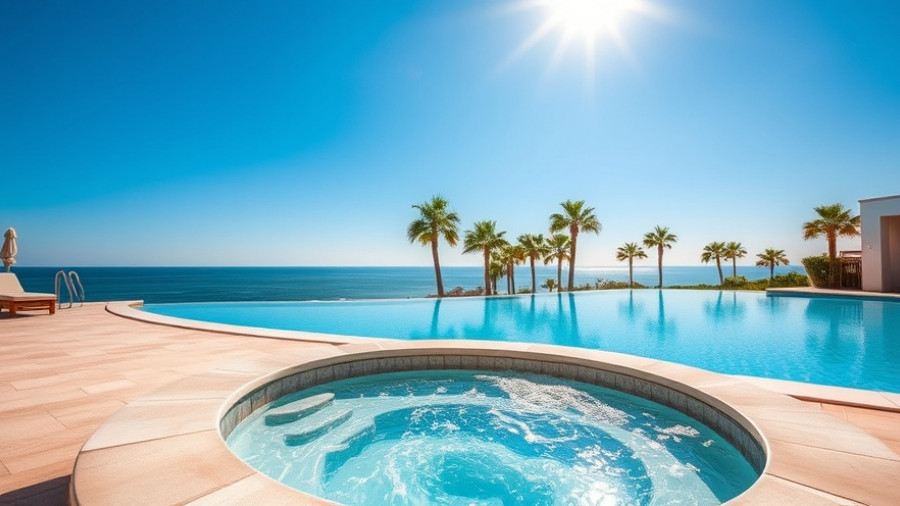
Maximize Your Relaxation: How to Keep Your Spa Tub Energy Efficient
As the popularity of outdoor spas rises, so does the concern over rising energy costs. For pool owners looking to maintain their backyard retreats, managing energy efficiency is crucial not only for saving money but also for reducing environmental impact. Below, we share practical insights to help you enjoy your spa tub without breaking the bank.
Invest in High-Quality Spa Covers
One of the first steps to boost your spa tub's energy efficiency is investing in a quality, insulated cover. A snug and well-fitted spa cover significantly minimizes heat loss that can come from evaporation. A properly insulated cover traps heat and keeps debris out, leading to reduced heating costs. Check your cover regularly for wear and tear; if it's showing signs of damage, it's time to replace it for both energy and water preservation.
Optimize Temperature Settings for Savings
Another budget-friendly tip is to lower your spa's temperature when it isn't in use. Reducing the temperature by 3-5°F can lead to savings of up to 20% on heating costs. Many modern tubs now come equipped with programmable thermostats that allow you to set heating cycles aligned with your usage patterns. This can be a game-changer in maintaining an eco-friendly heating schedule while enjoying that relaxing soak whenever the mood strikes.
Maintain Your Spa Equipment
Consistency in maintenance can prevent your spa equipment from working overtime, which wastes energy. Regularly clean filters and inspect pumps to ensure they work efficiently. A well-maintained system not only conserves energy but extends the lifespan of your equipment. Dirty filters can restrict flow, causing the heater to work harder, resulting in increased energy consumption.
Program Energy-Saving Modes
Embrace technology by making full use of your spa's energy-saving modes. Many modern spa tubs come with sleep settings or eco-modes that minimize power usage after hours. If your spa lacks these features, consider adding timers to manage filtration and heating cycles. This ensures that equipment doesn't run unnecessarily while saving on energy bills without sacrificing usage comfort.
Upgrade for Efficiency
If you're still using an older tub, it may be time to consider upgrades. New energy-efficient components, like variable-speed pumps and LED lighting, operate with less electricity while maintaining performance. Such upgrades can yield significant long-term savings and improve your overall spa experience.
Location Matters: Placement for Efficiency
The location of your spa plays a crucial role in its energy consumption. Placing your tub in a sheltered area near structures can help reduce heat loss caused by wind exposure. Additionally, consider using landscaping or installing a gazebo for added protection from various weather conditions, further enhancing the tub's ability to retain heat.
Use Additional Insulation
For further energy savings, consider using thermal or floating blankets in addition to your main cover. These blankets create extra insulation against heat loss. While they may seem like a minor accessory, they can enhance your spa’s efficiency up to an additional 10%, making them worthwhile investments, particularly in colder climates.
Water Levels Matter|
Keeping your spa water at the right level is essential for optimal heating and circulation. Low water levels force the heater and pump to work harder, consuming more energy. Regularly inspect your spa for leaks and refill it to maintain efficiency.
Enjoy a More Eco-Friendly Experience
By implementing these energy-efficient practices into your spa routine, you can enjoy luxurious soak sessions without the guilt of high utility bills. Every action counts— from lowering temperatures to timely maintenance. Not only will you feel good about saving money, but you’ll also contribute positively to the environment.
 Add Row
Add Row  Add
Add 




Write A Comment